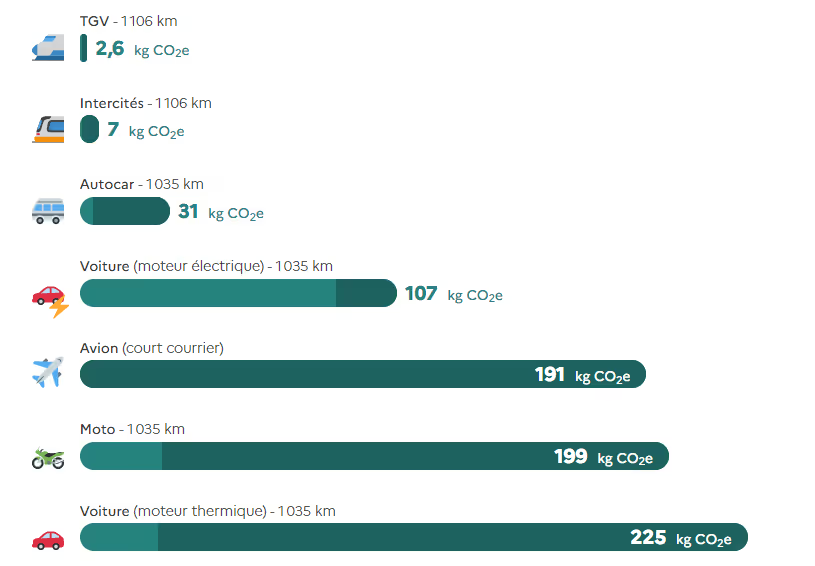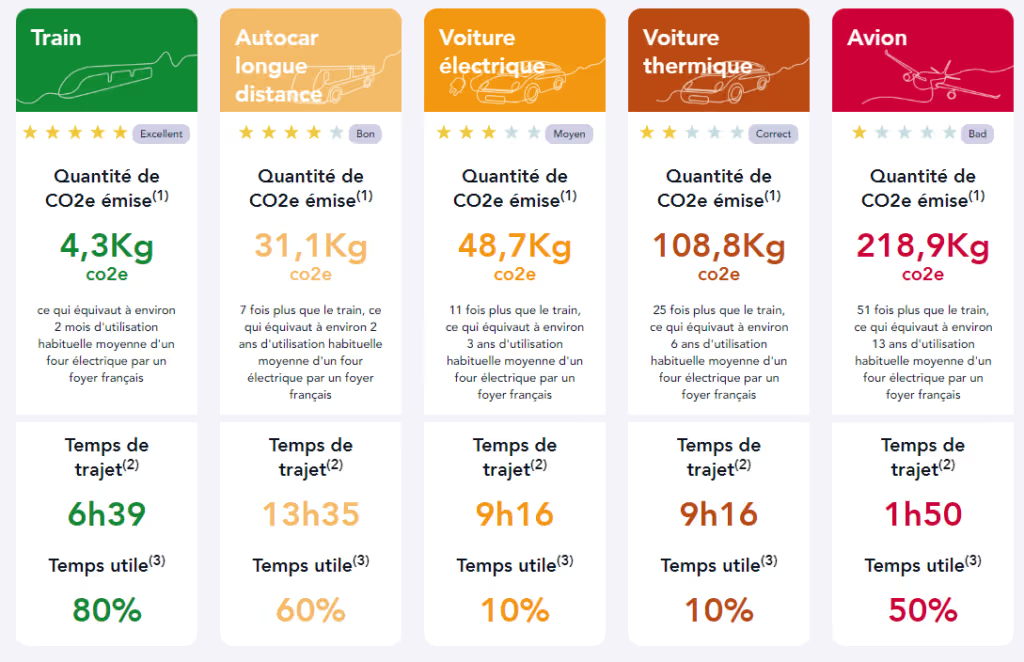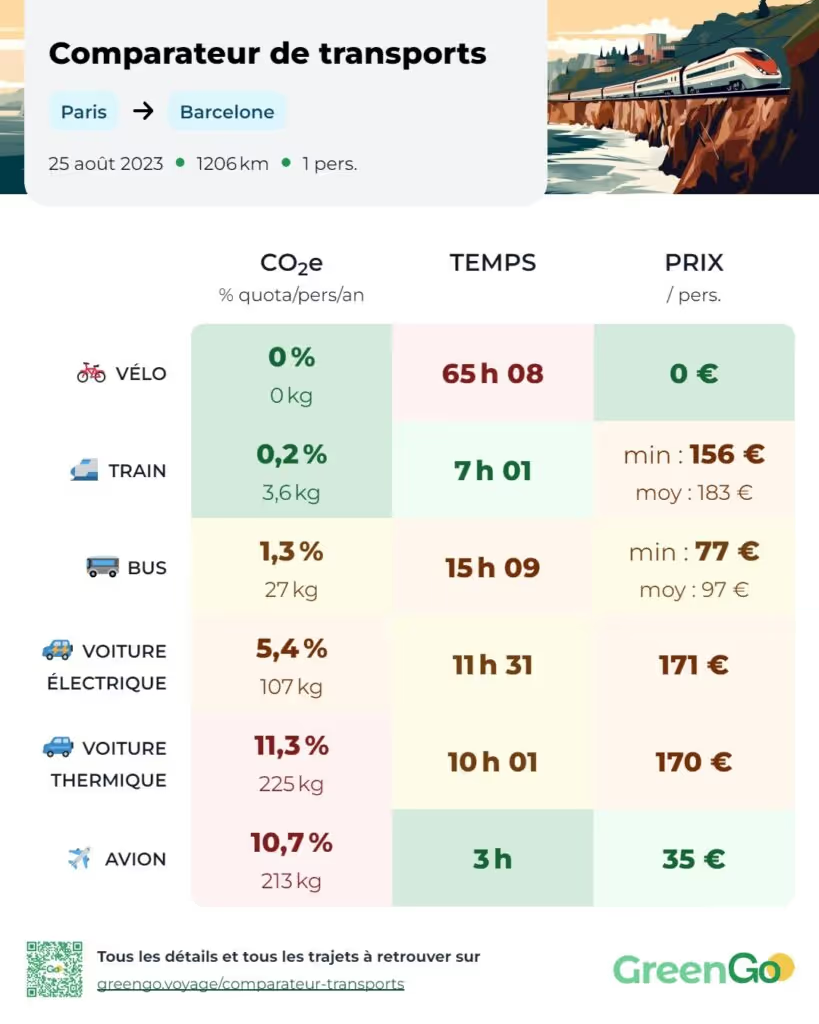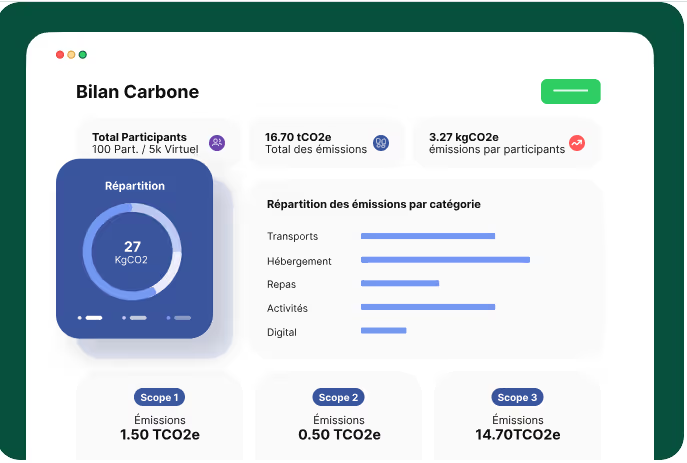In a world where environmental awareness is becoming an imperative, it is essential to reassess our actions and commit to more sustainable practices. The events we organize, whether small or large, are no exception. So every step towards reducing our carbon footprint counts! This article aims to guide you in understanding, measuring and then reducing the carbon footprint associated with the transport of your events. Without further ado, let's discover together how to take concrete measures to imagine memorable events that respect the planet and bring hope.
🌏Understanding the carbon footprint
Which transport emits the most CO2?
In France, Transport is the sector that emits the most greenhouse gases (28.7% of our total emissions in 2020). This is followed by agriculture (20.9%) and then that of manufacturing and construction (19.2%). Hence the importance of looking at our transport habits! We also know that a French person emits 1 ton 45 of CO2 equivalent per year just for his trips, while the total footprint objective is 2 tons by 2050.
Let's now go into the details of the transport category in order to find out which plane, train or car emits the most CO2.
On a daily basis, The car is the mode of transport that has the most impact on the environment. It is in fact responsible for almost all of our greenhouse gas emissions (95%). When we focus this time on long distance trips, The plane goes into first position (51% of emissions) but the car arrives just after (45%).
Greenhouse gases and CO2: what exactly are we talking about?
Greenhouse gases (GHGs) are naturally gaseous components present in the atmosphere terrestrial, such as water vapor or carbon dioxide. They are also generated by human activities, such as the use of fossil fuels and intensive agriculture. These gases take their name from their ability to retain heat in the atmosphere, which creates an effect similar to that of a greenhouse, thus contributing to global warming.
The CO2 is a specific type of greenhouse gas. It plays an important role in climate change because of its ability to retain heat in the atmosphere.
This short video from the newspaper Le Monde explains it very well!
Understanding global warming in 4 minutes
“When the Earth is illuminated by the Sun, its surface reflects some of the radiation received back into space. Except that greenhouse gases such as carbon dioxide, methane or nitrous oxide trap some of this infrared radiation emitted by the Earth and send it back to it; which contributes to warming it. However, it is precisely this mechanism that man has disrupted.”
🌡️ Measuring the carbon footprint
How to calculate the carbon footprint of a trip?
Today, we have a lot of tools at our disposal to calculate the carbon footprint of a trip we are considering. The easiest way is to use an online simulator, such as The ADEME calculator (select “Itinerary”), That of the SNCF or GreenGo's transport comparator, a platform for French and responsible housing.
We did the test ourselves for a Paris-Barcelona trip! Here are the results on all three platforms:
The Ademe trip comparator, according to the CO2 emitted by means of transport and per person. Above, a Paris-Barcelona trip.
The SNCF trip comparator, according to the CO2 emitted by means of transport and per person. Above, a Paris-Barcelona trip.
GreenGo's transport comparator, according to the CO2 emitted by means of transport and per person. Above, a Paris-Barcelona trip.
Even if the details of the results vary from one comparator to another, the conclusion is the same: the train unanimously proves to be the most ecological solution in our example (Yes, there is a direct train between Paris and Barcelona!) while the plane and the car are the most polluting options.
If events are regularly organized in your company and you want to have more accurate results, we advise you to invest in a calculator dedicated to events. This is the case of The Greenly app, which measures the overall carbon footprint (transport, meals, accommodations, activities) of your events.
Overview of the carbon footprint of an event thanks to Greenly
🍀Reducing the carbon footprint
What solutions to reduce the carbon footprint of my event transport?
Apart from the main mode of transport chosen for your event, here are other tips for minimizing the carbon footprint of travel:
- Opt for a place that is accessible by public transport;
- Set up a shuttle service;
- Encourage carpooling if car trips are required;
- Give priority to the use of electric vehicles;
- Collaborate with rental services for bicycles, electric scooters, or other soft mobility options to offer special discounts to your guests;
- Launch an eco-responsible challenge to the participants to see who will arrive at the event in the most ecological way, using sustainable modes of transport. Invite them to share their photos via your company's preferred communication tool.
- Organize a walk or bike ride for guests from a central meeting point to the event location, creating a friendly and eco-friendly group movement.
- Offset emissions by donating to reforestation or renewable energy projects.
Chez UNEXPECTED, we offer our customers an estimate of the CO2 emissions of their events in order to offset them 100% through the purchase of carbon credits. Carbon credits make it possible to financially support projects to reduce or sequester CO2. However, the purchase of carbon credits must remain a strategy complementary to a drastic reduction in our greenhouse gas emissions. Do not hesitate to contact us to find out more and to receive support on this subject.
You are now ready to get started! To reduce the overall carbon footprint of your event, do not hesitate to discover our 30 concrete ideas for an eco-responsible event !
____________________
Key figures for tractorsnsports - 2022 edition — Ministry of Ecological Transition
Mobility and greenhouse gases: who emits the most? — our environment
Mobility and greenhouse gases: who emits the most? — our environment















































.png)


